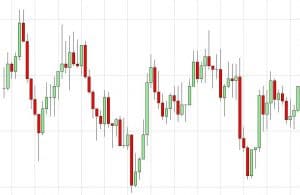
If you’re interested in jumping into the trading game but think you know just enough to be dangerous (to your own pocketbook), a good place to start might be with Exchange-Traded Funds (ETFs).
ETFs are not without pitfalls, but, then, no investment is risk free. Still, ETFs have some advantages in how they’re structured so that, if you follow the old adage about moderation in the dollar amount you put into it, you might well see a nice return on investment in the end.
ETFs are similar to mutual funds in that they pool investors’ money to buy diversified portfolios of stocks or bonds. Investors buy shares in the funds through brokerages firms. They tend to be index funds that track a specific sort of investment, like blue-chip companies or foreign stocks. This makes them a valid option for many, and is why people from around the world go through the ETF portfolio breakdown (or ETF Portfolio Aufteilung in Germany) process to ensure everything is performing as it should.
Even though ETFs are diversified, they trade like stocks – purchased on margin and sold short and with prices updated in real time versus at the end of the day, like mutual funds. Add low expense ratios and lots of liquidity to the mix, and the allure is obvious.
“ETFs have gained a lot of popularity in recent years for a variety of reasons – especially their advantages as alternatives to mutual funds,” says Matt Choi, a successful trader who founded Certus Trading, a trading educational program that educates traders on how to trade ETFs, among other markets.
“A lot of their advantages make them ideal for beginning traders,” Choi adds. “They also lend themselves well to particular trading strategies that will help new traders advance the learning curve fairly painlessly.”
Three of those strategies follow:
- Seasonal trends. There are a variety of common seasonal trends to bet on. One is the historic underperformance of U.S. equities in the May through October period, versus November through April. You can capitalize on this trend by “selling in May, then going away” or shorting, say, the SPDR S&P 500 ETF, then closing out the short position at the end of October when the volatility subsides. (Keep in mind, though, that deviations to trends do occur, so consider stop-losses on such trades to manage your risks.)
- Asset allocation. Sometimes simple is best. Since ETFs have such a low investment threshold (as little as $50 per month), use it as the basis of a basic asset allocation strategy. A lot depends on your investment time horizon and tolerance for risk. But this strategy can be used to fill gaps in your portfolio. It can also be a way to replace higher-fee mutual funds. Once you get more comfortable with ETFs, they can be a good way to bet on industry sectors. Or bonds. Or, if you have cash to be garaged for a while, look at short-duration bond ETFs, which pay a lot more than money market funds.
- Hedging. ETFs are an easy and efficient way to help you guard against downside risk in your larger investment portfolio. If your diversified portfolio includes blue chip equities and you’re concerned about a decline, a short position in broad market ETFs will hedge your blue chip position effectively. The declines in one would be offset by the gains in the other.
There’s a lot to like in ETFs, especially compared to other managed funds. But, Certus Trading’s Matt Choi stresses, “Trading in these is like any other financial investment. Know what you’re willing to risk given your time horizon, start small in the amount you’re putting into it, and do your homework.”



